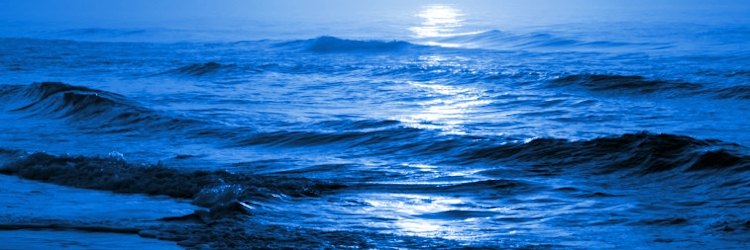Satellites and Storms Activity #1
Water Temperature Highs Fuel Air Pressure Lows

Author
Kevin Goff and Susan Haynes, Virginia Institute of Marine Science
Grade Level
8-12
Lesson Time
60 min
Objectives
- Describe atmospheric conditions from observing a basic weather map.
- Identify high and low pressure systems on a weather map based on respective indicators.
- Forecast conditions based on weather maps and satellite imagery of sea-surface temperature.
Hurricane, Northeaster, Noreaster, Low pressure, Wind barb, Coriolis, Fetch
Materials Required
Credits
edited and updated by Carol Hopper Brill and Chris Petrone, Virginia Sea Grant, Virginia Institute of Marine Science Summary
Investigate weather patterns, weather maps and the effects weather has on the ocean, all using real ocean observing system data. Introduction
A "low" is a mass of warmer, lighter air that is rising off the earth's surface . This creates a vacuum (= low pressure) over the land or sea. This vacuum draws air in horizontally from all sides, and this produces wind. We'll come back to talk more about lows and wind later.
What makes the air warm to begin with? Warmed by the sun's greater intensity at low latitudes, the tropical ocean becomes a source of heat for the atmosphere.
Hurricanes develop in the tropics over seawater that is warmer than 28°C (82°F). The seawater warms the air above it. Hot, humid air then rises, until at higher elevations it cools down. When it cools, the moisture condenses, forming massive cumulus clouds, and a storm is born.
Nor'easters develop a bit differently, but also depend on warm water and warm air for their energy. We'll investigate them later.
Data Activity
Go to the Rutgers University's COOL site Satellite Images page.
- Scroll down the page. On the left you'll see "Sea Surface Temperature Composite."
- Under that heading, select "Eastcoast."
- Scroll down to the "Most Recent Imagery" section in the center. You'll see thumbnail images for 10-days of data. The most recent image, the top left, is an analysis of yesterday's satellite data.
- Click the most recent image to get a full screen. You'll see the longitude (X-axis) and latitude (Y-axis). The temperature color legend is on the far right; you may have to use the cursor arrow to scroll over to it.
Be patient while this downloads. The colorful image of ocean temperature you'll see is made available by oceanographers at Rutgers University in New Jersey. The images are from the NOAA AVHRR (Advanced Very High Resolution Radiometer) satellites. The white areas are cold temperatures caused by clouds.
Tracking the factors that fuel coastal storms
- Find today's approximate sea surface temperature (SST) at 25°N latitude and between 60-65°W longitude. If the map is white, that means there are clouds in the way of the satellite's sensors; look through earlier dates for a better view of the sea surface.
Hurricanes develop in the tropics over seawater that is warmer than 28°C (82°F). Are the waters down in the tropical Atlantic (at 25°N latitude, for example) warm enough at this time of year to produce a hurricane?
- For comparison, review the approximate SST in this same location between the dates of August 15-28, 2005, right before Hurricane Katrina struck the Gulf Coast on August 29. Report the sea surface temperature at 25°N latitude and 65°W longitude.
(To do this, scroll back up to the "Sort by: date" box and enter the August dates. Then, hit "Select" and review the new images. Hurricane Katrina appears as a white area in the first image, scroll down to the image of August 15 and click for a larger view.)